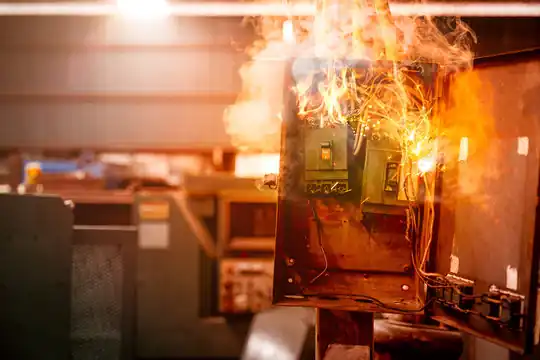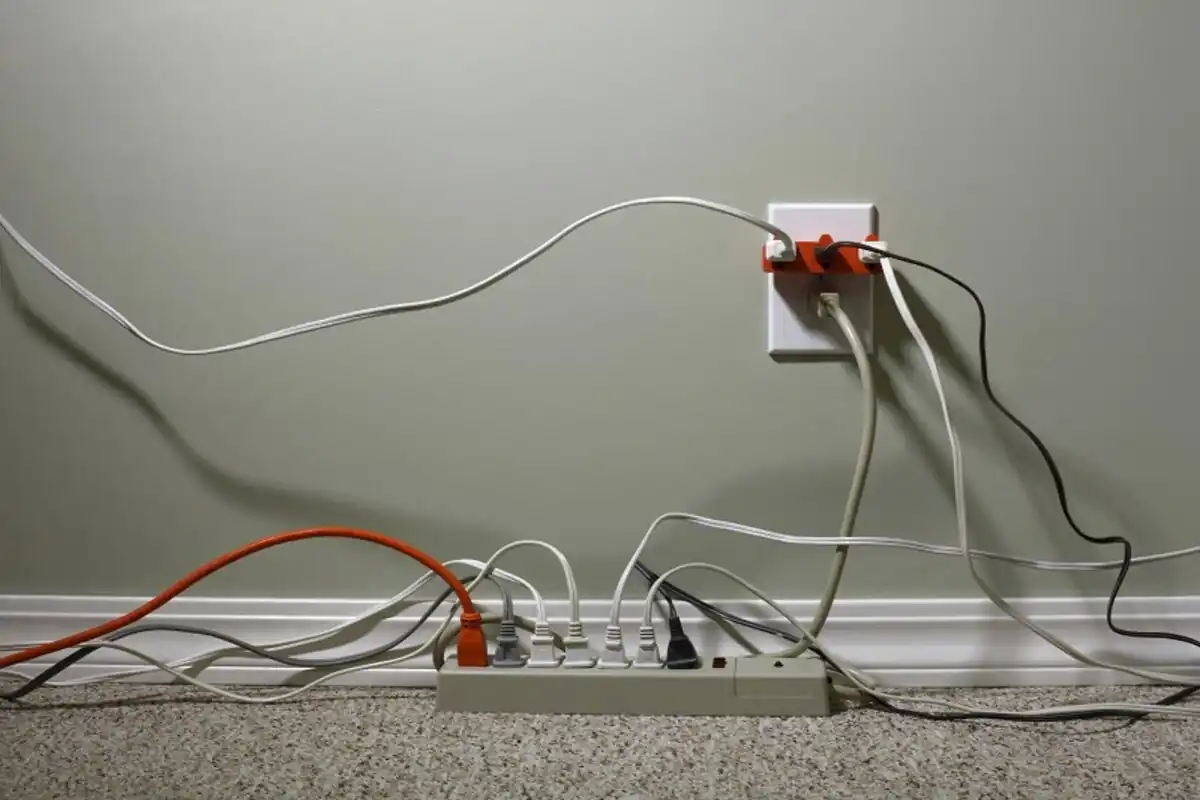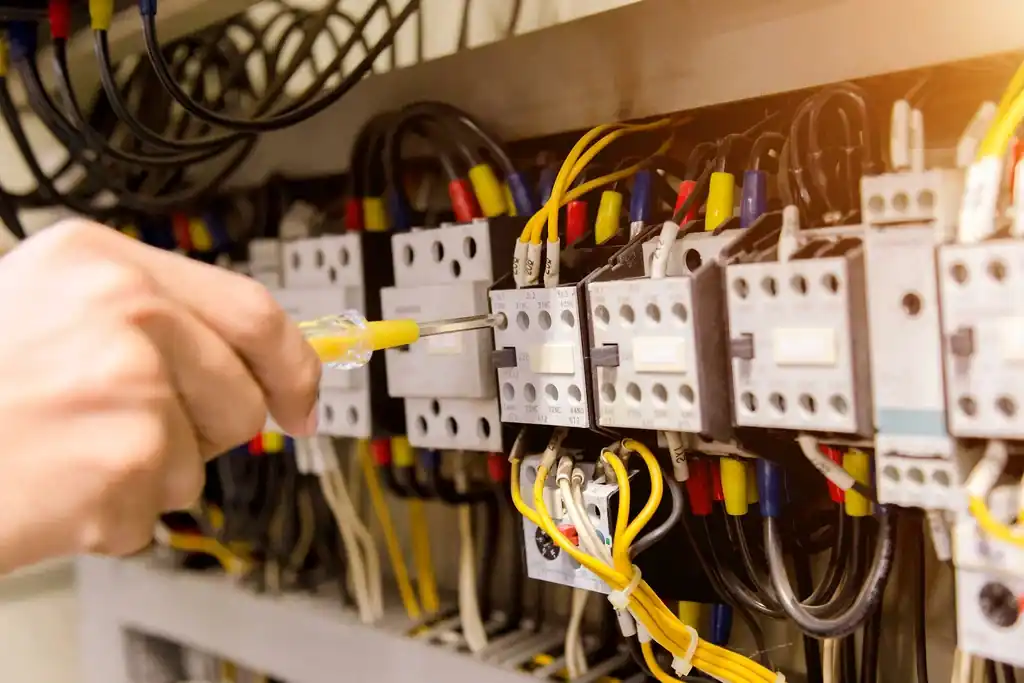One of the main causes of home fires and electrical issues in residential settings is electrical circuit overload. Keeping your home safe and safeguarding your electrical system from harm requires knowing how to avoid overloaded circuits. You might observe a non functioning electrical wall outlet frequent breaker trips or even more severe safety risks when circuits are overloaded.
Understanding Circuit Overloads
When more electricity passes through an electrical circuit than it was intended to, the circuit is said to be overloaded. Each circuit in your house has a rated amperage usually 15 or 20 amps for typical circuits. The circuit is overloaded when the combined electrical demand from all connected devices surpasses this limit.
Circuit breakers are safety devices that upon detecting an overload condition automatically cut off power. Even though this safeguard guards against damage right away frequent overloads can result in long term issues and even hazardous circumstances.
Can Overloaded Circuit Cause Fire?

It’s true that an overloaded circuit can catch fire so preventing circuit overload is crucial for household safety. When electrical wires carry more current than their rated capacity, they generate excessive heat. This heat has the potential to ignite nearby flammable materials, cause electrical arcing, and harm wire insulation.
Every year, thousands of home fires are caused by overloaded circuits. When circuit breakers malfunction or homeowners disregard warning indicators such as flickering lights warm outlets or frequently tripping breakers the risk rises dramatically.
The fire danger from overloaded circuits is particularly high in older homes with outdated electrical systems that weren’t designed to handle modern electrical loads. These systems may lack adequate circuit protection or have deteriorated wiring that’s more susceptible to overheating.
Common Signs of Circuit Overload
To avoid electrical fires and system damage, it is essential to recognize the warning signs of circuit overload. Intermittent non operation of an electrical wall outlet may be a sign of circuit stress prior to a total overload.
The most visible indication of overload is circuit breakers that trip frequently. Your circuit is probably carrying more electrical load than it can safely handle if you keep resetting the same breaker.
Warm outlet covers or switch plates, burning smells close to electrical components dimming or flickering lights when appliances turn on and mild electrical shocks from outlets or appliances are additional warning indicators.
How Can You Prevent an Overloaded Circuit
 Preventing an overloaded circuit starts with understanding your home’s electrical capacity and managing how electricity is used. The most effective strategies include proper load distribution, safe electrical practices and regular electrical system maintenance to ensure everything functions safely and efficiently.
Preventing an overloaded circuit starts with understanding your home’s electrical capacity and managing how electricity is used. The most effective strategies include proper load distribution, safe electrical practices and regular electrical system maintenance to ensure everything functions safely and efficiently.
Load Distribution and Management
Appropriately dividing electrical loads among several circuits is the cornerstone of circuit overload prevention. Do not connect several high wattage appliances to the same circuit outlets. Rather than distribute these gadgets among various circuits in your house.
Because they usually consume a lot of power kitchen appliances require extra care. Toasters, coffee makers, microwaves and refrigerators should ideally be on different circuits or at the very least not used on the same circuit at the same time.
Understanding Electrical Demands
Different appliances and devices draw varying amounts of electrical current. Understanding these demands helps you make informed decisions about what can safely operate together on the same circuit.
| Appliance/Device | Typical Amperage Draw | Circuit Recommendation |
| Refrigerator | 6-8 amps | Dedicated 20-amp circuit |
| Microwave | 8-13 amps | Dedicated 20-amp circuit |
| Hair Dryer | 10-15 amps | 20-amp bathroom circuit |
| Space Heater | 12-15 amps | Dedicated 20-amp circuit |
| Coffee Maker | 8-12 amps | Kitchen 20-amp circuit |
| Washing Machine | 10-16 amps | Dedicated 20-amp circuit |
| Electric Dryer | 24-30 amps | Dedicated 30-amp circuit |
| Air Conditioner (window) | 8-15 amps | Dedicated 20-amp circuit |
| Vacuum Cleaner | 8-12 amps | Standard 15-20 amp circuit |
| Television (large) | 3-8 amps | Standard 15-amp circuit |
Proper Extension Cord Usage
Never use extension cords as a long term wiring solution. Make sure extension cords are rated for the electrical load they will support and are in good condition with no insulation damage when you must use them.
Daisy chaining power strips or extension cords greatly raises the risk of a fire and makes it simple for circuits to become overloaded. Although they offer extra security power strips with integrated circuit breakers should not be used as the main safety precaution.
Identifying High Draw Appliances
While homeowners can implement many overload prevention strategies, some situations require professional electrical intervention. If your home frequently experiences circuit overloads despite careful load management, your electrical system may need upgrading.
Adding new circuits is often the most effective long term solution for homes with insufficient electrical capacity. A qualified electrician can assess your electrical needs and install additional circuits to handle your electrical demands safely.
Upgrading your electrical panel may be necessary if your current panel lacks adequate capacity or uses outdated technology. Modern electrical panels provide better protection and can accommodate additional circuits as needed.
Professional Electrical Solutions

Although there are numerous overload prevention techniques that homeowners can use, there are some circumstances that call for expert electrical assistance. Your electrical system might need to be upgraded if, even with careful load management, circuit overloads still occur frequently in your house.
For homes with inadequate electrical capacity, adding new circuits is frequently the best long term solution. To safely manage your electrical demands, a licensed electrician can evaluate your needs and add more circuits. That’s where Tri-L Electric’s Professional Electrical Solutions come in they offer expert assessments and safe, code compliant installations.
If your current electrical panel is not large enough or is using old technology, you might need to upgrade. Contemporary electrical panels can support more circuits as needed and offer superior protection and Tri-L Electric can help ensure the upgrade is done right.
GFCI and AFCI Protection
Ground Fault Circuit Interrupter and Arc Fault Circuit Interrupter protection provide additional safety layers that complement overload prevention efforts. These devices can detect dangerous electrical conditions and shut off power before fires or electrocution can occur.
Seasonal Considerations
Seasonal variations in electrical demands are common with winter heating and summer air conditioning adding to the strain on your electrical system. By modifying your electrical usage habits and making sure your circuits can withstand the increased demand you can prepare for these seasonal variations.
Seasonal electrical loads are also influenced by temporary heating solutions and holiday decorations. During these times, exercise extra caution and think about getting your electrical system inspected before seasons of high usage.
Maintenance and Monitoring
Regular electrical system maintenance plays a crucial role in preventing overloads and ensuring safe operation. Schedule periodic electrical inspections, especially in older homes or after major appliance additions.
Monitor your electrical usage patterns and keep track of which circuits serve different areas of your home. This knowledge proves invaluable for load management and troubleshooting electrical issues.
Replace worn outlets, switches and electrical components promptly. Damaged electrical components can contribute to circuit stress and increase fire risk even under normal electrical loads.
The Cost of Prevention vs. Consequences
Compared to the possible expenses of electrical fires, property damage and system repairs, putting circuit overload prevention measures into place requires a relatively small investment. Simple load management practices cost nothing but can prevent thousands of dollars in damage and potentially save lives.
In addition to providing the electrical capacity required for modern living professional electrical upgrades are a wise investment that raises property value and safety.
Don’t wait for circuit overloads to threaten your home’s safety. Contact Trip-l Electric LLC today for professional electrical system evaluation and upgrade services. Our licensed electricians can assess your electrical needs, identify potential overload risks and implement solutions to keep your family safe. Protect your investment and ensure reliable electrical service with our expert electrical services.
Schedule your electrical safety inspection now. Prevention is always better than repairs.
Conclusion
Preventing overloaded circuits isn’t just about avoiding inconvenience it’s about protecting your home, family and investment from serious hazards like fires and costly damage. By understanding your electrical system’s capacity, managing high draw appliances and keeping up with regular maintenance, you can greatly reduce the risk of circuit overloads. For homes with growing electrical demands or persistent issues, professional help is essential. Don’t wait for warning signs to turn into emergencies partner with licensed electricians like Tril Electric LLC to ensure your system is safe, modern and reliable.
